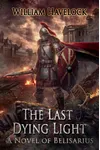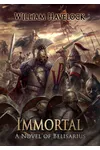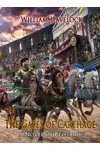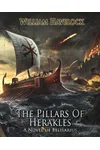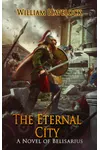Picture a research scientist by day, spinning epic tales of ancient heroes by night—meet William Havelock! This American novelist breathes life into the forgotten corners of the 6th-century Byzantine Empire with his gripping 'Last of the Romans' series. Through vivid storytelling and meticulous research, Havelock transforms soldiers, slaves, and generals like Flavius Belisarius into flesh-and-blood figures, making history pulse with adventure and intrigue.
With a knack for drawing parallels between ancient struggles and modern challenges, Havelock’s work isn’t just a time machine—it’s a mirror reflecting the resilience of the human spirit. Ready to march into his world of crumbling empires and daring conquests?
The Making of William Havelock
William Havelock’s love for history sparked young, gazing at portraits of giants like Julius Caesar and Queen Elizabeth I, daydreaming of epic battles and courtly intrigues. Historical fiction became his playground, but one figure stood out: Flavius Belisarius, the Byzantine general whose story was rarely told. By day, Havelock dives into complex systems as a research scientist, studying the drivers of societal shock—a perfect lens for crafting tales of empires on the brink.
This dual life fuels his writing, blending analytical precision with a storyteller’s flair. Frustrated by the lack of novels about Belisarius, Havelock took up the pen himself, launching a series that’s as much about heart-pounding action as it is about the timeless problems humanity faces.
William Havelock’s Unforgettable Stories
Havelock’s 'Last of the Romans' series kicks off with 'The Last Dying Light' (2020), where Varus, a young Herulian freedman, joins Belisarius to defend a decaying empire against invaders. The novel sets the tone: fast-paced battles, rich historical detail, and characters who feel achingly real. 'Immortal' (2021) ramps up the stakes as Belisarius faces Persia’s elite Immortals, weaving themes of loyalty and sacrifice.
'The Gates of Carthage' (2022) follows Belisarius’s North African campaign, blending gritty warfare with political intrigue, while 'The Pillars of Herakles' (2023) and 'The Eternal City' (2024) chronicle the Gothic War and the siege of Rome. Havelock’s style shines in vivid battle scenes and deep character arcs, making the 6th century feel urgent and alive. His research—rooted in Byzantine history—grounds the fiction, while his scientist’s eye draws uncanny parallels to today’s societal fractures.
Readers praise Havelock for making the Eastern Roman Empire accessible, turning a lesser-known era into a thrilling saga. His ability to balance historical accuracy with emotional depth keeps fans eagerly awaiting each installment.
Why William Havelock Matters
Havelock’s work does more than entertain—it resurrects a pivotal era often overshadowed by Rome’s fall in 476 CE. By spotlighting the Byzantine Empire’s thousand-year legacy, he challenges readers to rethink history’s narrative. His stories of Belisarius, Theodora, and Justinian highlight the messy, human side of empire-building, resonating with anyone fascinated by resilience in the face of chaos.
As a scientist-novelist, Havelock bridges past and present, showing how ancient struggles—corruption, war, betrayal—echo today. His growing fanbase, evident in glowing Goodreads reviews, proves his knack for making history not just relevant but downright unputdownable.
- Key Works: 'The Last Dying Light', 'Immortal', 'The Gates of Carthage', 'The Pillars of Herakles', 'The Eternal City'
- Genre: Historical Fiction
- Notable Theme: Resilience amid societal collapse
Snag 'The Last Dying Light' and dive into William Havelock’s thrilling blend of history and heart—your ticket to the Byzantine Empire awaits!
